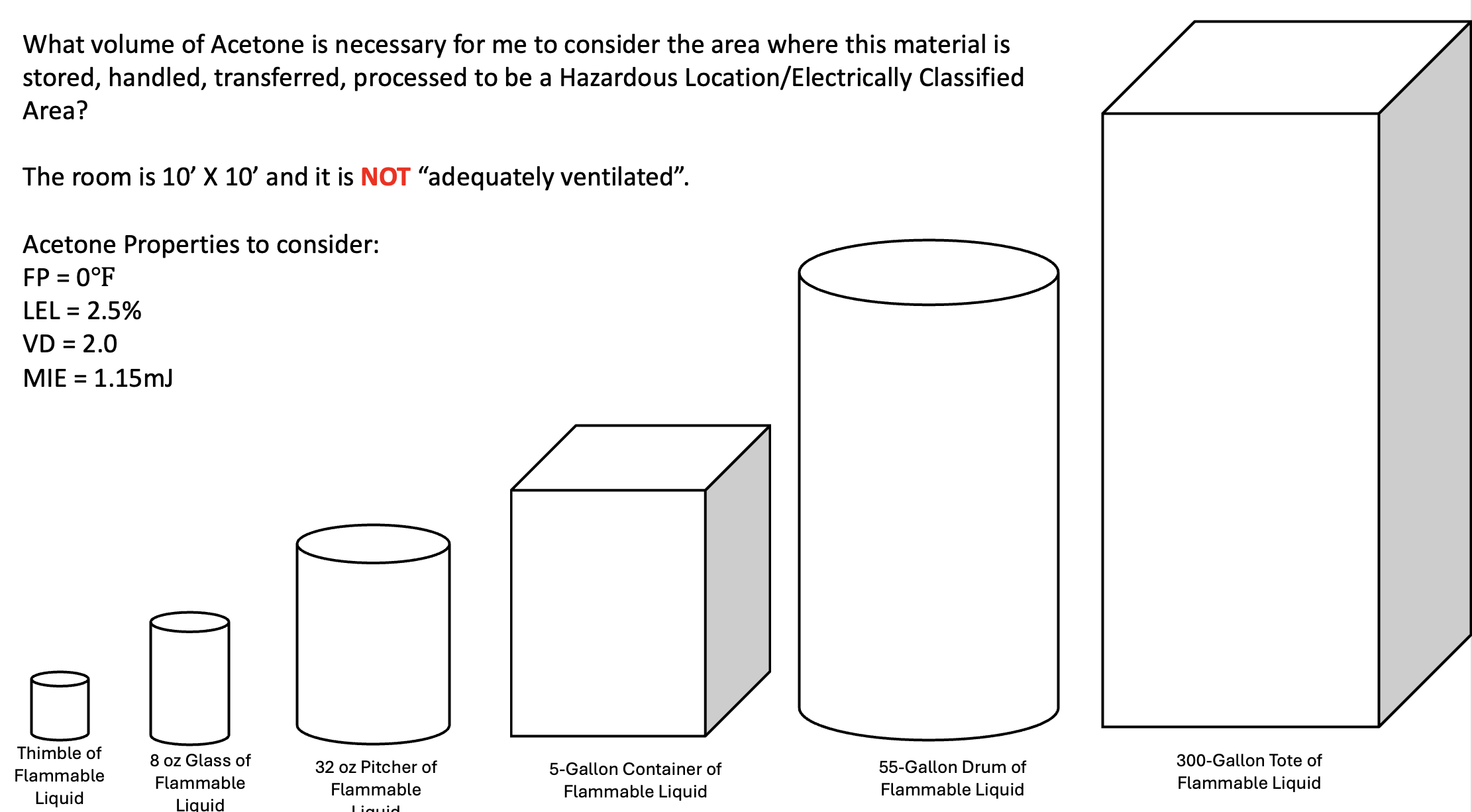One mistake many businesses make is their assumptions about how their flammable liquids will behave once they are outside of their primary containment. I have seen companies spend millions of dollars to classify an area as a HAZLOC when it was not even close to being necessary, and I have seen some PSM businesses claim their 70,000-pound process does not need to be a HAZLOC.
One of my advanced Flammable Liquids training course exercises is to help the students visualize the difference in the containers/containment involved in this risk analysis. Standing in the room, I hold up an old sewing thimble and ask, is this enough to make this room a HAZLOC? I then move to an 8-oz cup and ask. We go through the containers (as shown below), and as they work through the numbers in their head, we have great discussions about what we need to consider and how much we should weigh each point of consideration.
They realize that the FP, the LEL, and the MIE all play a crucial role in understanding the ignition risks/hazards this flammable liquid or gas poses.
Which container would you choose?














